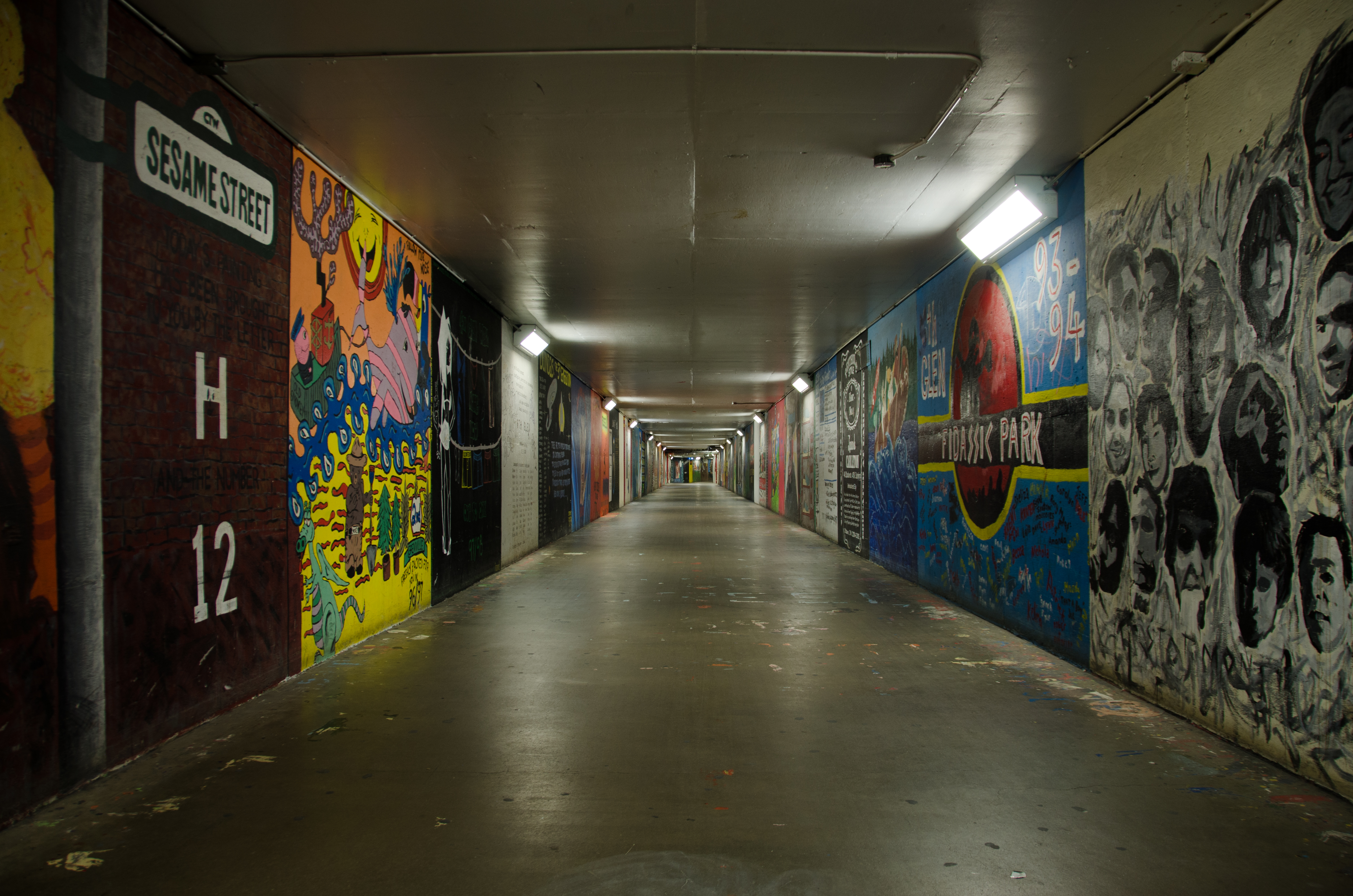When walking through the tunnels on a cold winter day, have you ever wondered what in the world those murals are all about? Every mural in the tunnel has a story behind it and each carry lifelong memories.
Teams, clubs, and organizations have murals painted throughout the tunnel system.
According to the Carleton University Kayak Club (CUKC)’s website, club members painted their mural—the club logo—in 2011 after approval from the university.
“We thought . . . it was going to take us about three hours to finish the whole painting,” the CUKC website said. “[But] after 10 long, hot, sweaty hours the hard work had paid off.”
The website said the mural painters started with a coat of white paint and sketched the logo over four quadrants before using any red or black paint.
“We first started with the red colour which involved many . . . small time consuming drops around our mascot, the raven, and our sweet kayaker,” said the website.
The finishing touches included painting the words “Carleton University Kayak Club” and erasing the pencil tracings, according to their website.
Aside from club murals, many others are painted by various residence communities each year.
Samantha Siebert, a third-year psychology student, helped members of her residence floor in Stormont House paint a mural in 2015.
Siebert said the title of the mural, “Smooth Criminals,” captures the dynamic of the residence community she experienced living on the first floor of Stormont.
“Everyone on our floor was constantly pulling pranks on each other and stealing things from the common room,” she said. “It was kinda like this ongoing joke that something would always go missing from the common room.”
Siebert added the mural painting was a way to bring her floor mates together and remember the good times.
“We wanted everyone on the floor to be involved in the mural so we included everyone’s handprint and name,” Siebert said.
Recently, a pink handprint was added to the mural. A student who lived on first-floor Stormont, Julia Gregoire, had passed away the following summer, so her fellow floor mates paid tribute to her through the handprint.
“We were all deeply saddened by it. So this year we thought it would be nice to paint her handprint pink,” Siebert said. “Kind of like our way of commemorating her.”
How can you paint a mural?
Smita Bharadia, the acting director of Equity Services, said via email that all students interested in painting a tunnel mural must submit an application to Equity Services.
“Equity Services assess if there are any human rights violations in the submissions,” she said. “The final signing authority is the VP finance.”
Bharadia added residence students are able to fill out an application for tunnel painting through the Rideau River Residence Association (RRRA).
Last year, Sydney Gardner, a third-year criminology student, applied to paint a mural for the sixth floor community of Lennox and Addington House.
“You apply through RRRA, it’s a form process and you explain your design, and draw sort of what you want to do,” Gardner said. “Then once you apply, RRRA reviews it to make sure it’s appropriate. And then if it is, they approve your application and allow you to paint.”
Gardner said the form is only one page long and emphasizes that the mural must not be offensive, violent, or demeaning.
The mural painted in 2016 by members of sixth-floor Lennox and Addington had a theme relating to Canadian rapper Drake, though Gardner said some students wanted to use the Mario Kart theme their residence fellows created for move-in weekend.
“Since a majority of students wanted a Drake theme, they included the Toronto skyline and the lyric ‘running through the 6’ because we were the sixth floor,” she said.
According to Gardner, the painting of the mural occurred over a span of three days, since it happened during exams, and there were four to eight people working on it at a time.
Why are these murals so important?
Gardner said her experience of painting a tunnel mural made her feel connected to Carleton’s history.
“[Mural painting] lets us make the tunnels ours,” she said. “[It] connects us with the school and makes us feel less like a single student and more like a student body.”
Siebert added she thinks the tunnel murals show students a sense of pride and community at Carleton.
“They’re a way to physically leave a mark on the school,” Siebert said. “When you’re walking through the tunnels to class it’s really cool to see murals that were painted in the ‘90s beside ones painted today.”
[tribulant_slideshow gallery_id=”28″]






